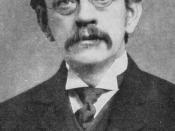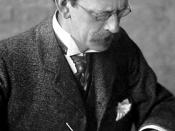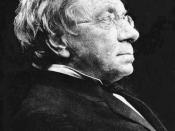A good discussion of the pros and cons of using the atomic bomb to end World War II -
AP Physics
Period 2
The Atom
In the spring of 1897 J.J. Thomson demonstrated that the beam of glowing matter in
a cathode-ray tube was not made of light waves, as 'the almost unanimous opinion of
German physicists' held. Rather, cathode rays were negatively charged particles boiling
off the negative cathode and attracted to the positive anode. These particles could be
deflected by an electric field and bent into curved paths by a magnetic field. They were
much lighter than hydrogen atoms and were identical 'what ever the gas through which the
discharge passes' if gas was introduced into the tube. Since they were lighter than the
lightest known kind of matter and identical regardless of the kind of matter they were born
from, it followed that they must be some basic constituent part of matter, and if they were a
part, then there must be a whole.
The real, physical electron implied a real, physical atom:
the particulate theory of matter was therefore justified for the first time convincingly by
physical experiment. They sang success at the annual Cavendish dinner.
Armed with the electron, and knowing from other experiment that what was left
when electrons were stripped away from an atom was much more massive remainder that
was positively charged, Thomson went on in the next decade to develop a model of the
atom that came to be called the 'plum pudding' model. The Thomson atom, 'a number of
negatively electrified corpuscles enclosed in a sphere of uniform positive electrification'
like raisins in a pudding, was a hybrid: particulate electrons and diffuse remainder. It
served the useful purpose of demonstrating mathematically that electrons could be arranged
in a stable configurations...


